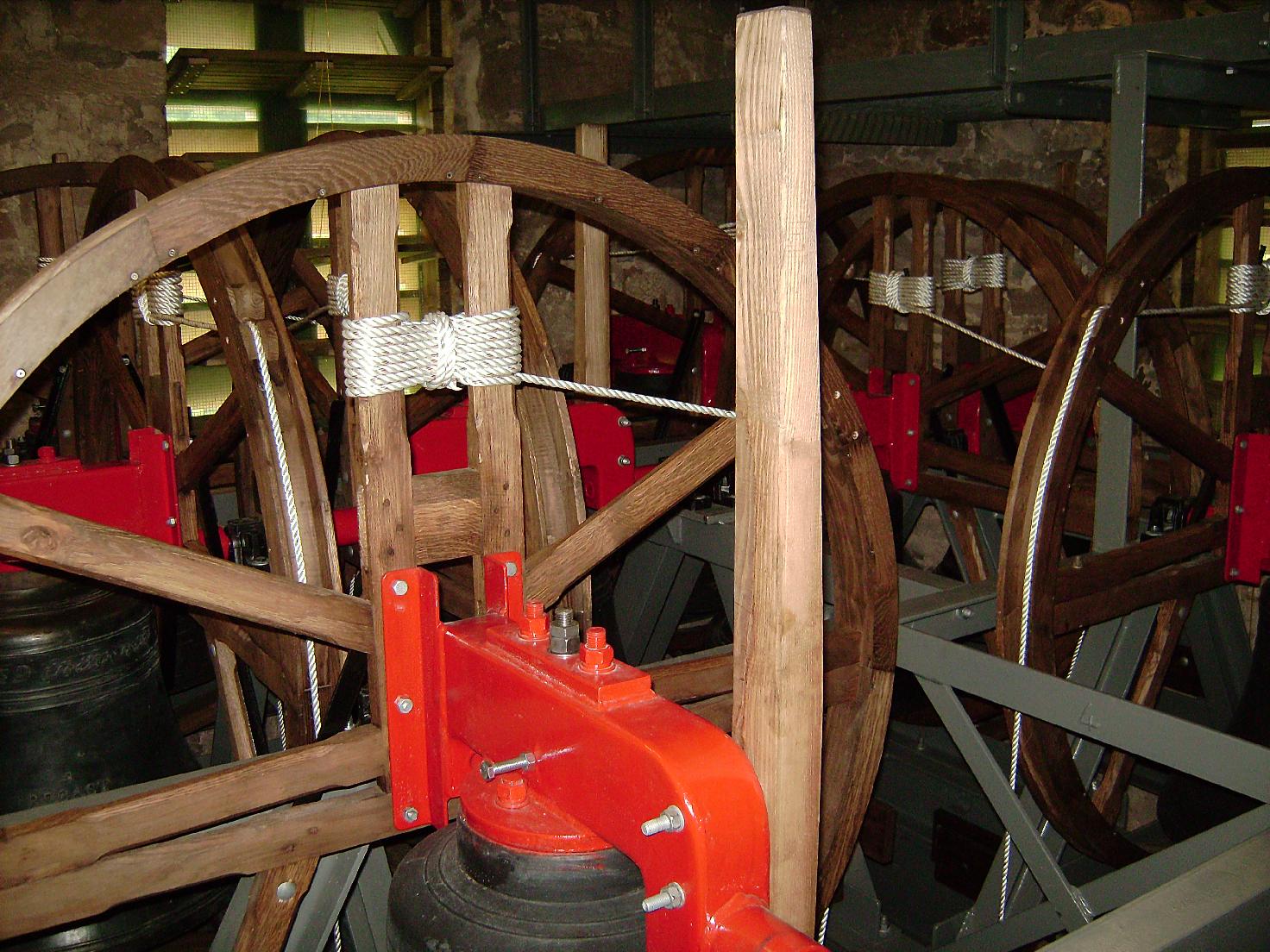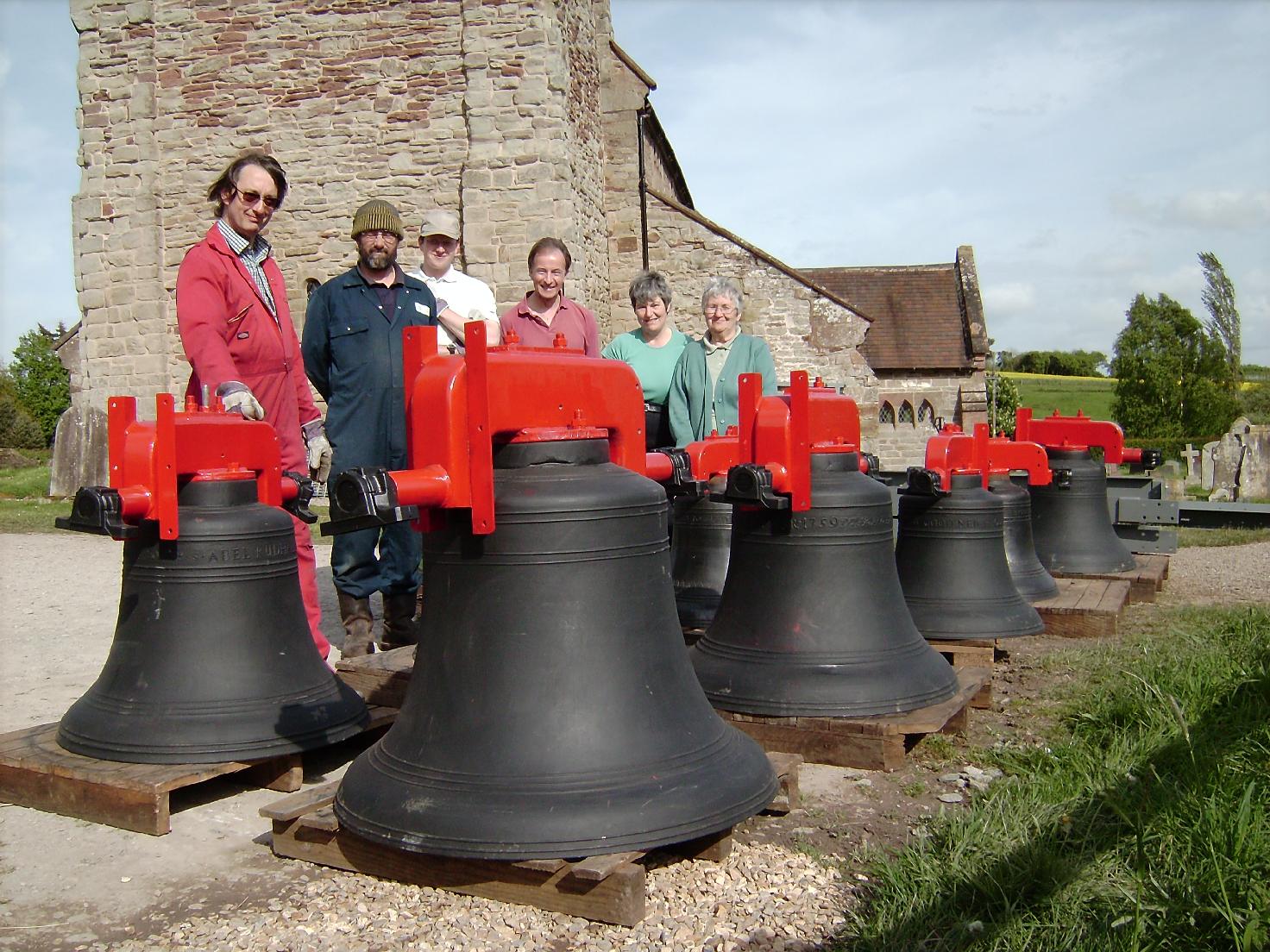What's On
BELL RINGING | TEAS IN CHURCH FOR OPEN HALL | OPEN GARDENS | THE DOWER HOUSE | HARVEST SUPPER
Morville Bells

History
The predominantly Norman tower of Morville Church has contained bells for as far back as the local records go. In medieval times it was known that there were four bells. These were mentioned in an inventory of parish property dated 1539 following the dissolution of the monasteries, by which time Morville’s Benedictine Priory had already fallen into a ruinous state. These four bells were recorded again in a survey of Shropshire bells of 1730, but in 1759 the parish splashed out on a brand new set of six, cast in Gloucester by the famous Rudhall Foundry. These were hung in a locally built oak frame. In 1854 the tenor (largest) bell cracked and was recast by the Whitechapel Bell Foundry in London. These six bells were in regular use for almost 200 years until the mid1950’s at which point the condition of the frame and fittings led to them being declared unringable.
Present Day
The bells were silent, despite several attempts to launch restoration schemes. Then in 2006 a small group of enthusiastic villagers decided that they would like to learn to ring and get the bells going again. They began to take lessons a nearby tower and launched a campaign to raise many tens of thousands of pounds for the project. Thankfully it turned out to be a hugely successful appeal. During 2007/8 a total of over £100,000 was amassed from the fundraising, personal donations and grants. So in May 2009 the six original bells were restored and reinstated on a new steel frame. Two new bells were also added to make the tower an eight-bell tower. The end result is a very fine set of bells that are rung from the new first floor ringing chamber, attracting ringers from all over the country.
If you are interested in ringing the Morville Bells please contact the Tower Captain, Ian Rowe (01746 714357).

The Dower House
Is an impressive one and a half acres divided into a sequence of gardens to tell the story of Morville Hall through gardening from Medieval times until the present. It includes a turf maze, cloister garden, Elizabethan knot garden, eighteenth century canal garden, Victorian rose border, Edwardian fruit and vegetable garden, and wild garden.
Opening hours:
In addition to opening for the Morville Festival, the Dower House Garden is open from the beginning of April to the end of September every Sunday & Wednesday and Bank Holiday Monday from 2.00 to 6.00 p.m., and by appointment at other times for groups and coaches. Evening visits welcome.
Katherine Swift's book about her garden at the Dower House, The Morville Hours: the Story of a Garden, was the bestselling book in Shropshire ever, outselling even Harry Potter. It was serialised on BBC Radio 4 as 'Book of the Week', and Katherine has recorded it (unabridged) for the Royal National Institute for Blind People's 'Talking Books' scheme.
Her second book, The Morville Year, is illustrated with 32 pages of colour photographs of the garden and 13 exquisite line drawings of flowers. It takes the reader from spring through the four seasons of the garden and back to spring once more. This is what Anna Dreda of Wenlock Books wrote about it:
The Morville Year is an inspiring book, beautifully written, full of knowledge and wisdom that is written with the lightest of touches and with real grace. Katherine ranges from Bob Dylan to Gertrude Jekyll; from picking blackberries to star-gazing; from trundling around the countryside on her motor-bike to catching the stopping train (28 stations) to Cornwall. She gives us the recipes to the delicious scones she serves at her open garden afternoons, and shares the secrets of quince paste and cassis. The origins of decking our halls with boughs of holly are explored along with the druidic and Celtic rituals that still mark the turning of the seasons. What comes across so clearly is her passion for her garden, for the little bit of earth from which she has created this exquisite, ever-changing, historically and spiritually rooted series of gardens that is the Dower House garden. Katherine mentions that it sometimes takes an artist to enable us to see what is in front of us in real life. For me, Katherine is that artist, who paints with words, and who so faithfully and remarkably pays attention to the smallest miracle and then writes about it for us, so that we can see, and share, and wonder, too.
We are so lucky to be in this lovely little bit of Shropshire that Katherine writes about so eloquently - the references to the wall flowers on John James garden wall in Bridgnorth; her visits to Avril’s flower shop that used to be in the High Street in Much Wenlock; her descriptions of the annual Morville Flower Festival – all so familiar to us, and now shared and enjoyed across the country, and probably around the world.
Her third book is due out next year.
Shropshire Tourism - The Dower House Garden
facebook.com/TheDowerHouseGardenAtMorville